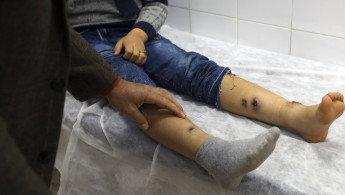5,000 cases of potentially deadly tropical disease in Libya: ministry
Leishmaniasis, which is caused by a microscopic parasite spread by sandflies, creates ulcers and disfiguring scars, and one variety can attack internal organs.
It is often associated with poverty and poor urban sanitation.
"There are currently 5,000 patients who are being treated," said Ahmad al-Qarari, who heads the centre for disease control at the health ministry of Libya's UN-backed unity government.
But he told AFP that these were only cases which have been registered by the authorities, noting that the extent of the problem remains unknown because some patients do not seek treatment.
Qarari said the World Health Organization was providing Libya with treatment from India and that a new batch of medication was due next week.
Most of the cases were registered along North African country's Mediterranean coast west of the capital, Tripoli.
Mansour Souleiman said he contracted the disease while harvesting olives in December.
"I noticed small lesions (on my skin) and at first I thought they were caused by insect bites," he said at a clinic in Tripoli where authorities provide treatment. Within a month they became ulcers, he said.
According to WHO estimates published in 2018, there are about 700,000 to one million cases of leishmaniasis globally every year, with 20,000-30,000 people dying of the disease.
Qarari said it first appeared in Libya a century ago and more recently in 2006.
"The government must organise awareness campaigns continuously because this disease has become endemic," Qarari said.
Libya has been rocked by deadly conflict and its economy thrown into turmoil since a 2011 NATO-backed uprising which toppled and killed longtime dictator Muammar Gaddafi.
Follow us on Twitter: @The_NewArab





 Follow the Middle East's top stories in English at The New Arab on Google News
Follow the Middle East's top stories in English at The New Arab on Google News
![Israeli forces ordered bombed Gaza's Jabalia, ordering residents to leave [Getty]](/sites/default/files/styles/image_330x185/public/2176418030.jpeg?h=a5f2f23a&itok=_YGZaP1z)

